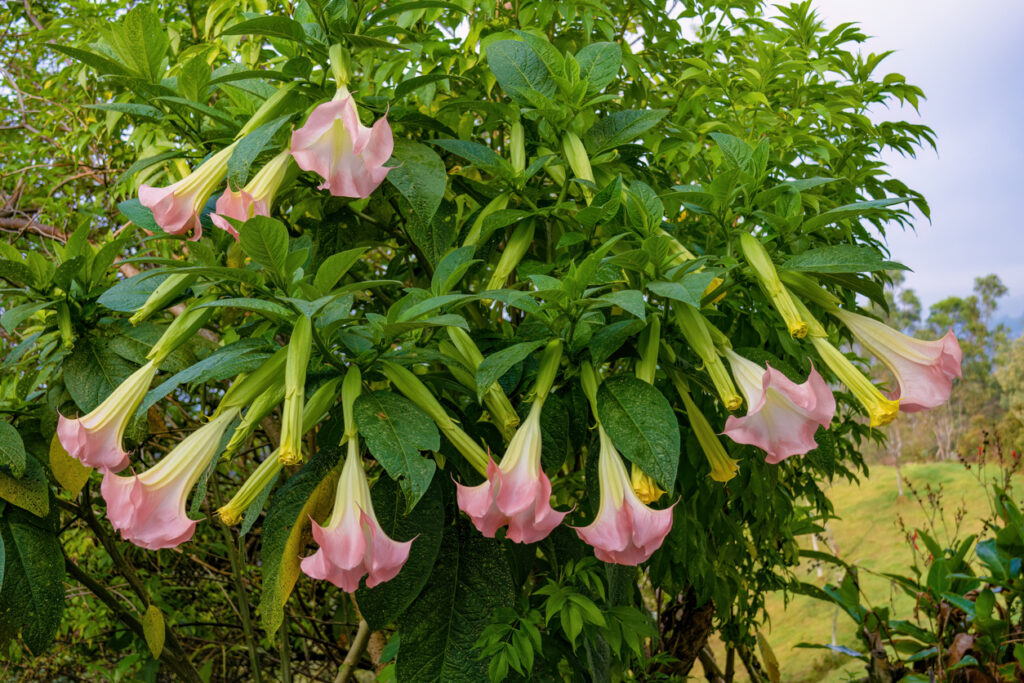Be Careful if You Encounter Some of Them

When we think of danger in nature, our minds often jump to wild animals or poisonous snakes. But lurking quietly in forests, gardens, and even some homes are plants with surprisingly sinister traits. From toxins that can stop a heart to sap that can blind you, these deadly florae are a reminder that Mother Nature doesn’t play around. Ready to meet the world’s most dangerous plants? Just wait till you hear what the last one can do.
1. Oleander: Beautiful But Lethal

You’ve probably seen oleander bushes in public parks or lining suburban streets, but don’t let the lovely pink blooms fool you. Every part of this plant, from root to flower, contains powerful cardiac glycosides. Ingesting even a small amount can cause nausea, slowed heartbeat, and death. It’s often called the “most poisonous commonly grown garden plant” for a reason. Surprisingly resilient, oleander thrives in warm climates, making it a hidden threat in everyday landscapes. Source: Gardening Channel
2. Castor Bean Plant: Home of Ricin

It might surprise you that this tropical-looking plant is the natural source of one of the most potent toxins known to science: ricin. Just one or two castor beans chewed and swallowed can kill an adult human. The plant’s seeds are beautiful, often mistaken for decorative beads, which adds to the danger. While castor oil is processed safely, the raw plant is nothing short of lethal. It’s often found in ornamental gardens, especially in warm U.S. states. Source: Britannica
3. Water Hemlock: America’s Deadliest Wild Plant

Often mistaken for edible plants like wild carrot, water hemlock is a silent killer found across much of the United States. Its toxic compound, cicutoxin, attacks the nervous system, causing seizures and, in many cases, death. Just a small bite of the root is enough to be fatal. It’s especially dangerous because it grows near water sources where foragers may stumble upon it. Experts say it’s among the most toxic plants native to North America. Source: USDA ARS
4. Deadly Nightshade: The Femme Fatale of Plants

Also known as belladonna, this plant has a long history of use in poisons, potions, and even cosmetics. With shiny black berries that look almost edible, it’s a dangerous temptation for kids and animals. A small handful of berries can kill an adult. Belladonna affects the nervous system, leading to hallucinations, paralysis, and eventually respiratory failure. Though rare in the wild today, it still grows in parts of Europe and the U.S., especially in shady woods and gardens. Source: turkarchpediatr
5. Gympie-Gympie: The Suicide Plant

Native to Australia, this stinging tree has earned a terrifying reputation. Its leaves are covered in microscopic silica hairs that inject a neurotoxin capable of causing intense, long-lasting pain. Victims describe it as being set on fire and electrocuted at the same time. The agony can last for weeks or even months, and in some cases, it has driven people to suicide. It’s not common in the U.S., but its story has fascinated plant experts and survivalists alike.
6. Angel’s Trumpet: Dreamy Looks, Dangerous Effects

With its trumpet-shaped blooms and sweet fragrance, this plant looks like it belongs in a fairytale. But angel’s trumpet contains powerful alkaloids that can cause hallucinations, delirium, paralysis, and death. Historically, it’s been used in spiritual rituals and poisons alike. Today, it’s still grown ornamentally in warmer parts of the U.S. like Florida and California. Even touching the plant and then rubbing your eyes can be dangerous, making it a risky beauty to keep around.
7. Manchineel Tree: Nature’s Toxic Time Bomb

Dubbed “the most dangerous tree in the world” by the Guinness Book of World Records, the manchineel tree is native to Florida, the Caribbean, and parts of Central America. Its fruit looks like a tiny green apple, but a single bite can be deadly. Even standing under the tree in the rain can cause skin blisters, thanks to the toxic sap. Authorities often paint warning signs on the trunk to protect the public, and for good reason.
8. Rosary Pea: Beauty Concealing Brutality

Often used in jewelry and traditional instruments, rosary peas contain abrin, a toxin even more potent than ricin. If the seed’s hard shell is damaged or broken, it releases a chemical that can shut down vital organs. Just one seed, if chewed, can be fatal. Despite this, it’s still used in decorative crafts worldwide. It’s a striking example of how beauty and danger can exist in one small, shiny package. Definitely not something to keep around the kids.
Did any of these plants surprise you? Have you encountered one in your own backyard or on a hike? Share your thoughts or stories in the comments and don’t forget to pass this on to your nature-loving friends before they touch something they shouldn’t!


